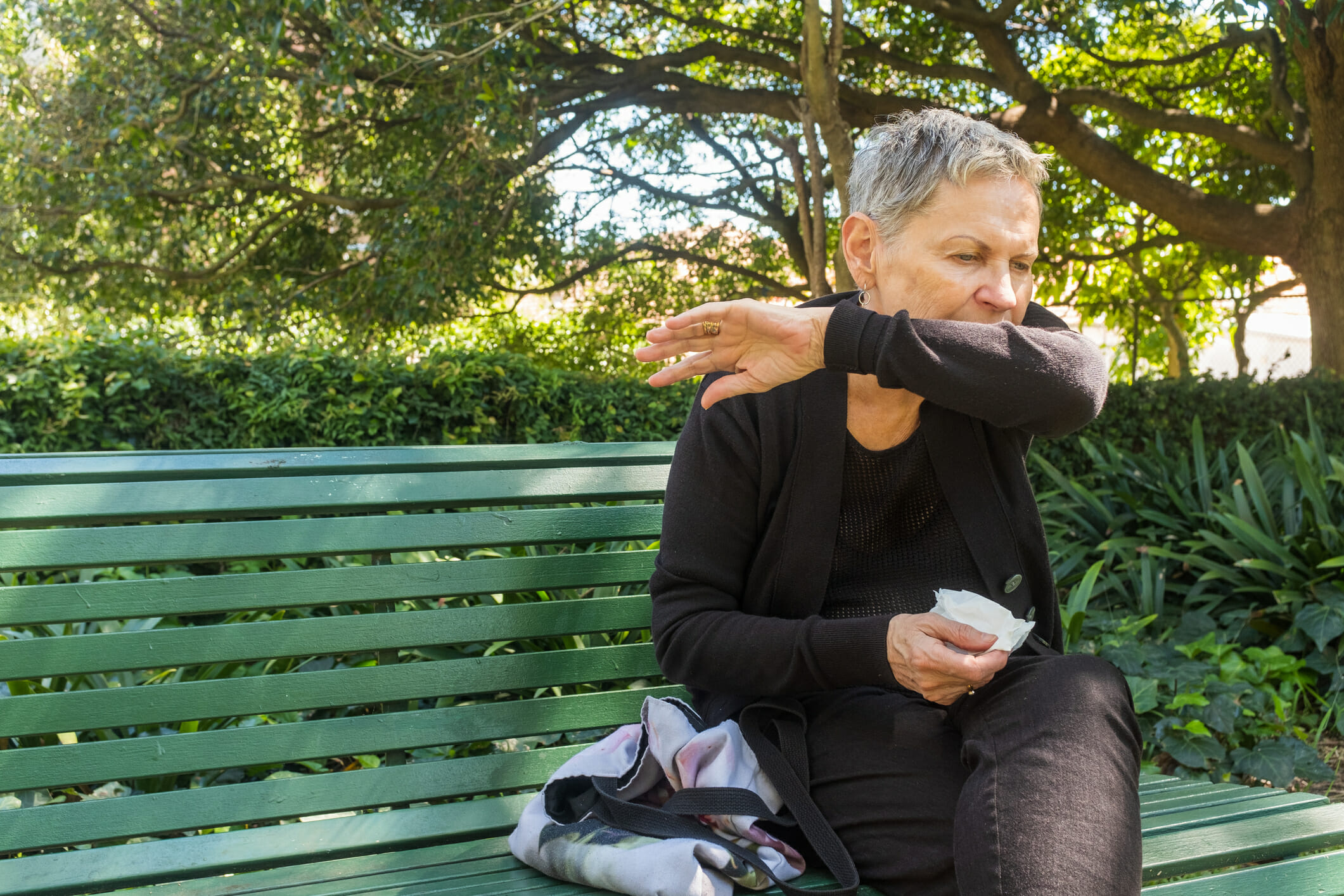
A COPD flare up (also known as an COPD exacerbation) is a sudden worsening of symptoms that can leave you feeling low on energy, short on breath, or tightness in the chest area.
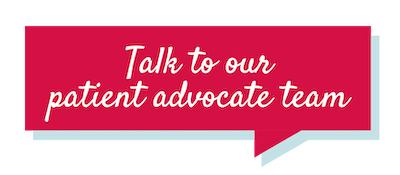 Other common symptoms of COPD that may worsen during a flare up include[1]:
Other common symptoms of COPD that may worsen during a flare up include[1]:
- Chronic cough
- Mucus Build up
- Respiratory infections
- Wheezing
- Swelling of ankles or legs
Every patient will experience COPD symptoms and flare ups differently. But how can you tell when you or someone you love is experiencing one? Are there certain triggers? Is this condition serious? Are their ways to help you avoid the sudden onset of worsening symptoms?
In this article, we’ll break down the following:

- How to identify a COPD flare up
- How to avoid certain triggers
- How to manage your chronic symptoms
- How to prevent a potential COPD exacerbation
Having a deeper understanding of your chronic lung condition will help you recognize its early warning signs, so you can talk to your doctor about getting an effective form of treatment that prevents your symptoms from keeping you in bed or in the hospital for extended periods of time.
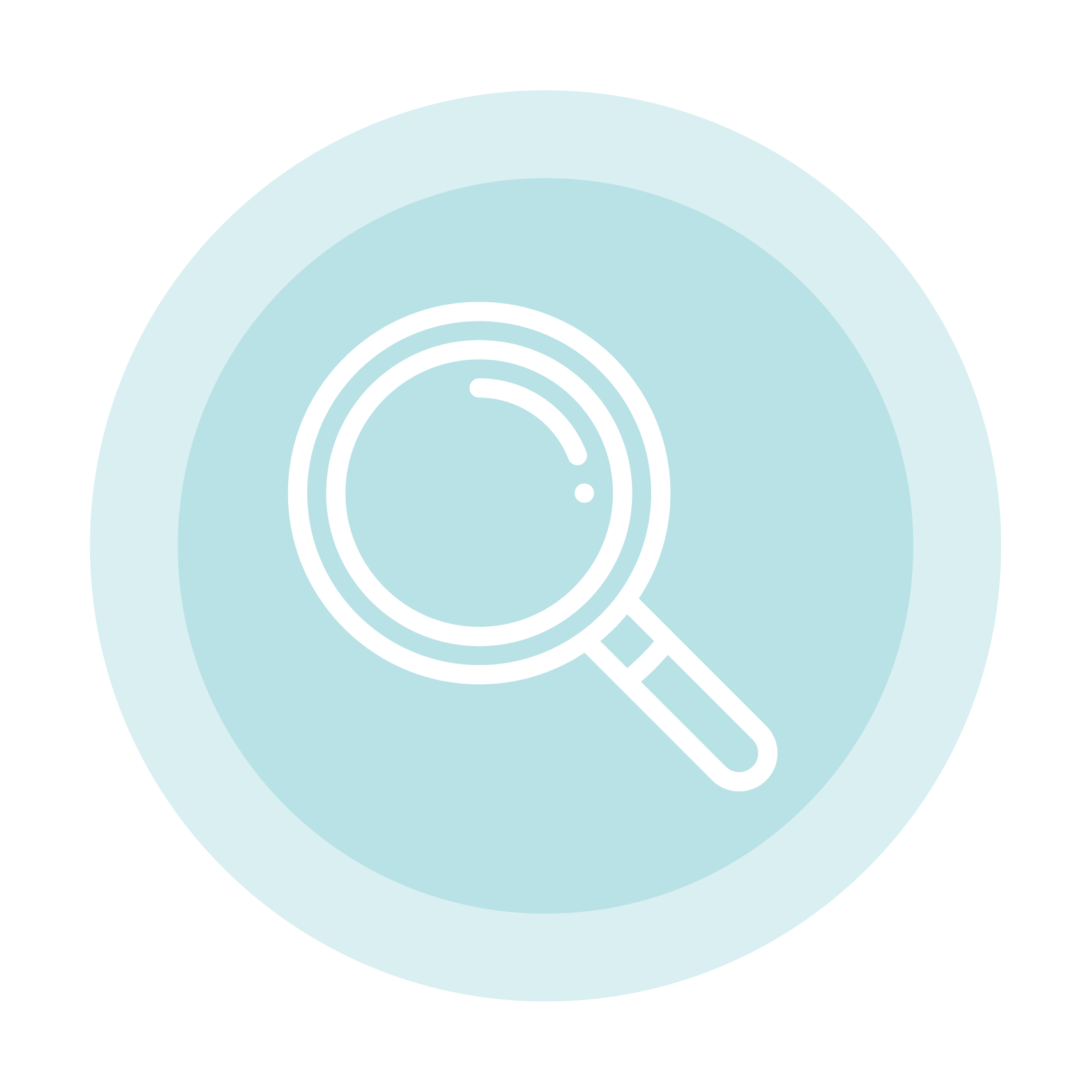
How to Identify a COPD Flare Up
If you’re living with COPD, you might experience difficulty breathing during exercise or while performing daily activities (e.g. mowing the lawn, walking the dog, or playing with grandchildren). COPD is an umbrella term for the following chronic lung conditions that can constrict a person’s airways, making it difficult to breathe on your own:
- Chronic Bronchitis: Often associated with cigarette smoking, chronic bronchitis occurs when your bronchi (airways) experience inflammation. This can cause irritation in the lungs that produces a chronic cough, increased mucus, tightness in chest, wheezing, and breathlessness.[2]
- Emphysema: As with chronic bronchitis, emphysema is traditionally caused by smoking, but it can also be passed through genetics. This condition is characterized by the irreversible stretching of the air sacs, which makes breathing more difficult: “Having fewer and larger damaged sacs means there is a reduced surface area for the exchange of oxygen into the blood and carbon dioxide out of it.”[3]
- Refractory Asthma: When an individual has asthma, he or she experiences swelling of the bronchi, causing constricted airways: “Symptoms [of asthma] include trouble breathing, wheezing, coughing and tightness in the chest.”[4] Asthma becomes refractory when it does not respond to medication or treatment, making it much more difficult for patients to breathe or find relief from their symptoms.
COPD flare ups can last for several days, or even weeks[5] and may require hospitalization or the intervention of antibiotics (for infection) and airway clearance therapy ( for improved oxygen flow to the lungs).
According to the Lung Health Institute[6], early signs of a COPD exacerbation can include:
- Frequent coughs
- Increased shortness of breath
- Escalated wheezing
- Color changes (white, yellow, or green[7]) in mucus and/or increased production
If you experience a worsening of your COPD symptoms, contact your doctor for further instructions. Your clinician may prescribe you a new medication or treatment to help you find relief from your symptoms. Remember to never allow your COPD flare ups to go unchecked by your health professional. Flare ups can cause frequent respiratory infections that permanently damage your lungs and airways.
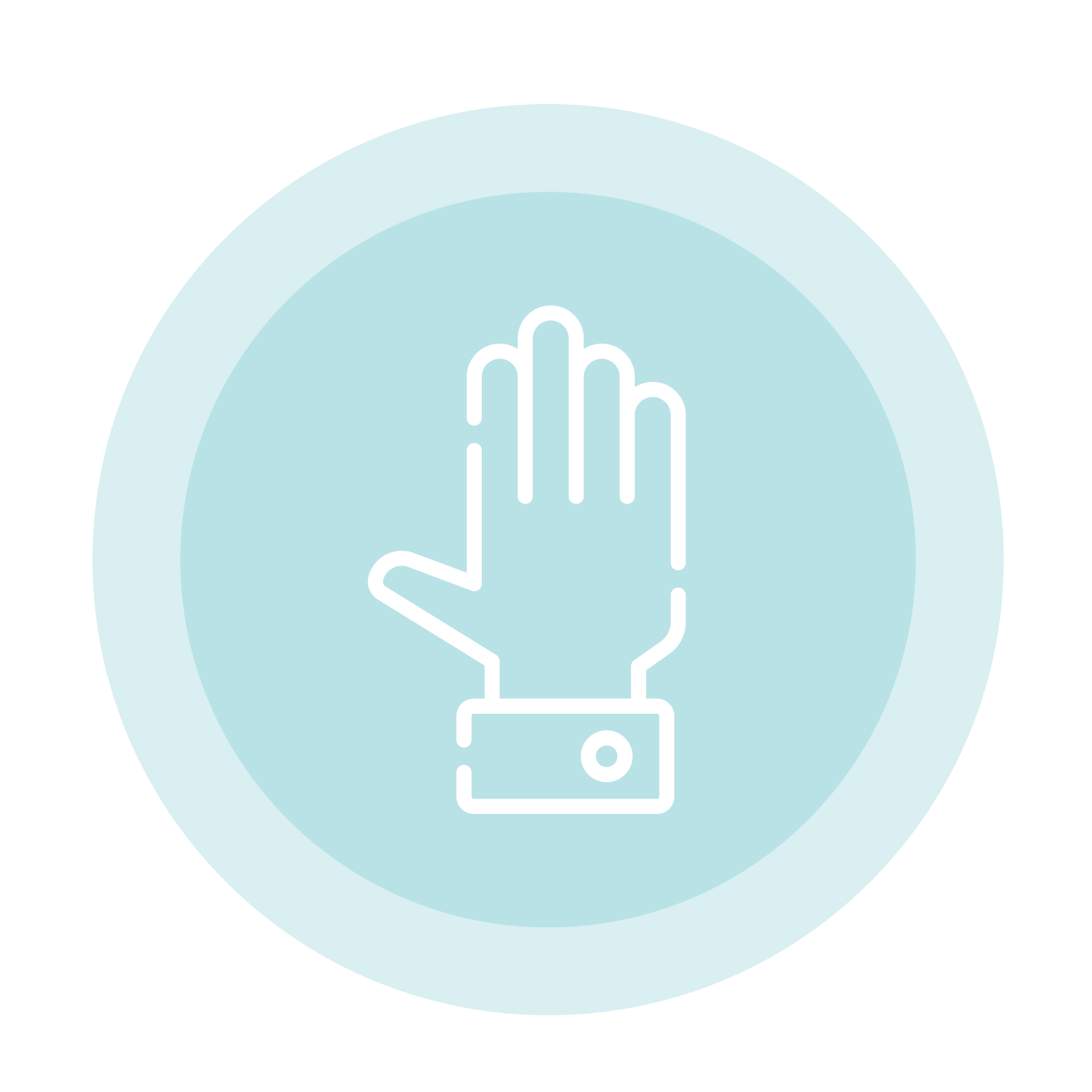
How to Avoid Certain Triggers
In addition to identifying early signs of COPD flare ups, it is just as important to recognize common COPD triggers that can make your symptoms worsen, causing lung irritation or infection.
Medical News Today outlines the top three COPD flare up triggers[8] that you’ll want to avoid and remind loved ones to also avoid in your home:
- Airborne Irritants: Cigarette smoke (first and second-hand), pollution, pollen, and dust particles can irritate your lungs and make breathing more difficult. If you’re living with COPD, it’s essential that you quit smoking immediately and limit your exposure to pollutants (e.g. car fumes, chimney smoke, etc.). Before heading out each day, check the air quality levels of your area.
- Weather Conditions: Extreme hot, humid, or cold weather can easily trigger your COPD symptoms. As noted above, it’s always helpful to check the forecast before traveling outdoors to lessen the risk of exposure to high/low temperatures and humid conditions.
- Other Respiratory Illnesses: “People with COPD are more likely to catch colds, the flu and pneumonia. Any respiratory infection can make it much more difficult to breathe and could cause further damage to lung tissue.”[9] If a family member or close friend is ill, you’ll want to keep a safe distance to avoid exposure to their illness, which can weaken your immune system and cause your COPD symptoms to worsen.
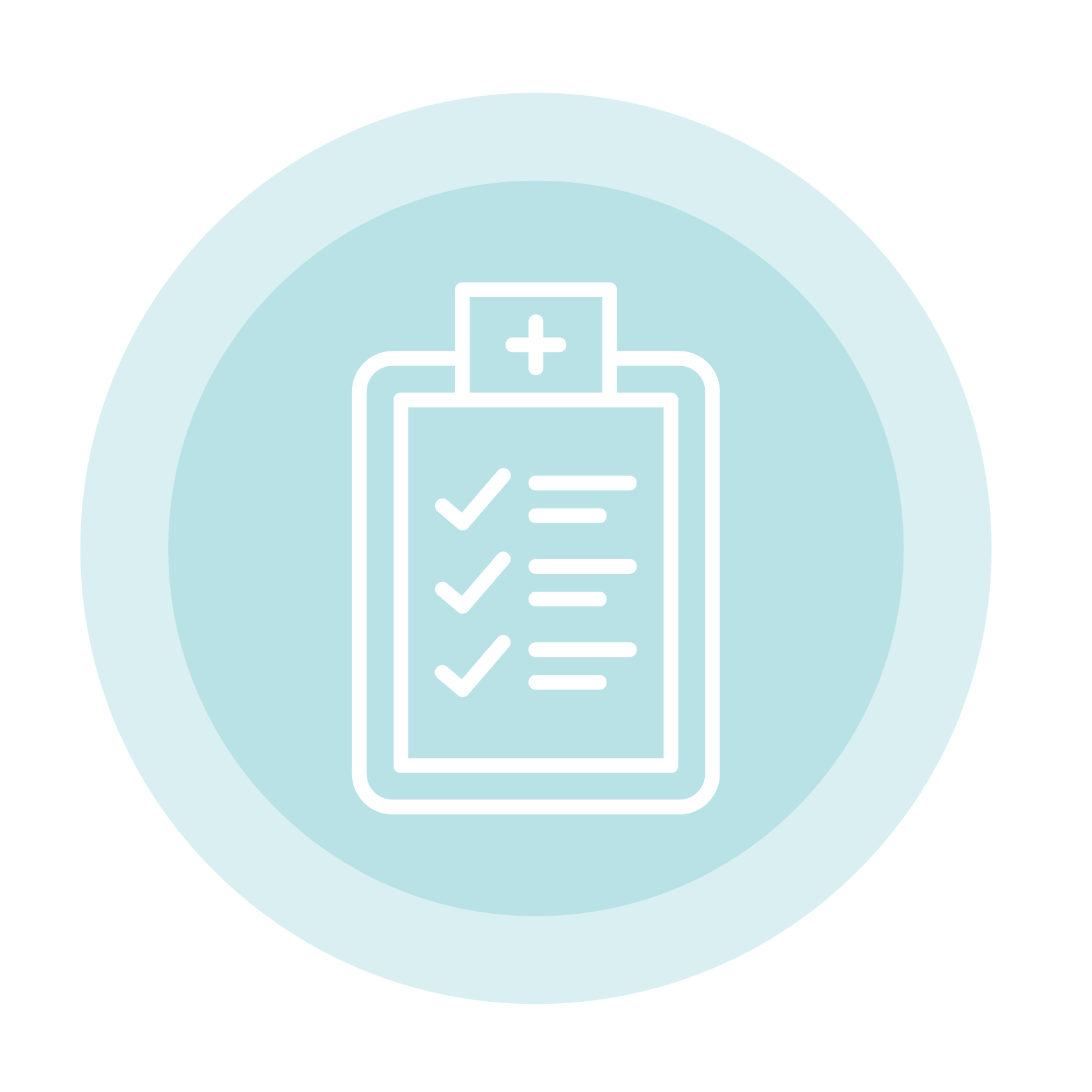
How to Manage Your Chronic Symptoms
Because each person will experience COPD differently, your treatment plan may differ from someone else you may know living with the same chronic condition. You clinician may prescribe one or a combination of the following methods:
Breathing Techniques: This may range from purse-lip and diaphragmatic “abdominal” breathing to huff coughing. This type of treatment typically includes a combination of prescribed medications, such as bronchodilators, inhalers, or theophylline to help relax the airways, as well as antibiotics to heal infection[10].
Oxygen Therapy: Your clinician may prescribe you to take supplemental oxygen to help relieve symptoms and improve airflow in your lungs.
Airway Clearance: The majority of respiratory infections are caused by bacteria in the lungs. This occurs when constricted airways don’t allow the bronchi to mobilize and clear mucus from the lungs, causing mucus build up. When this happens, your lungs become inflamed and infected, causing irreversible damage. Airway clearance via high frequency chest wall oscillation (HFCWO) therapy helps deliver repeated pulses of air that gently squeeze and release the upper body. The continuous flow of oscillating air helps loosen mucus and propel it upwards, where it can be more easily coughed out. This helps prevent mucus build up and the potential for respiratory infection.
Pulmonary Rehabilitation: This type of treatment consists of group classes designed to provide COPD patients with education to increase their understanding of their lung condition. The program also features exercise sessions for patients to improve their fitness level and stamina for breathing while performing their favorite activities.[11]
Surgery: Depending on the severity of your individual condition, your clinician may recommend surgery to help improve airflow to your lungs. This is considered a more extreme approach to COPD treatment and is not for everyone.[12]
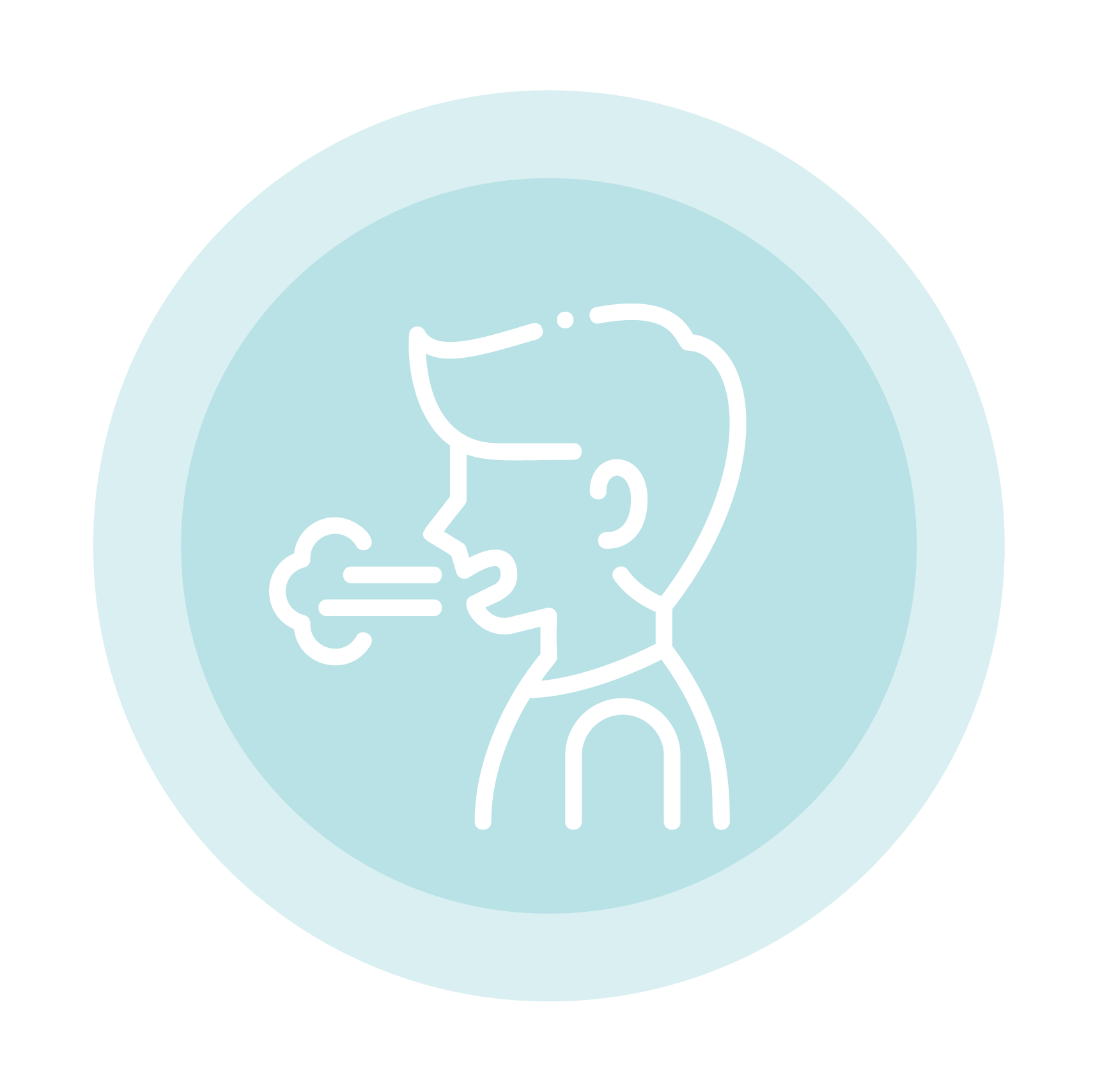
How To Prevent a Potential COPD Flare Up
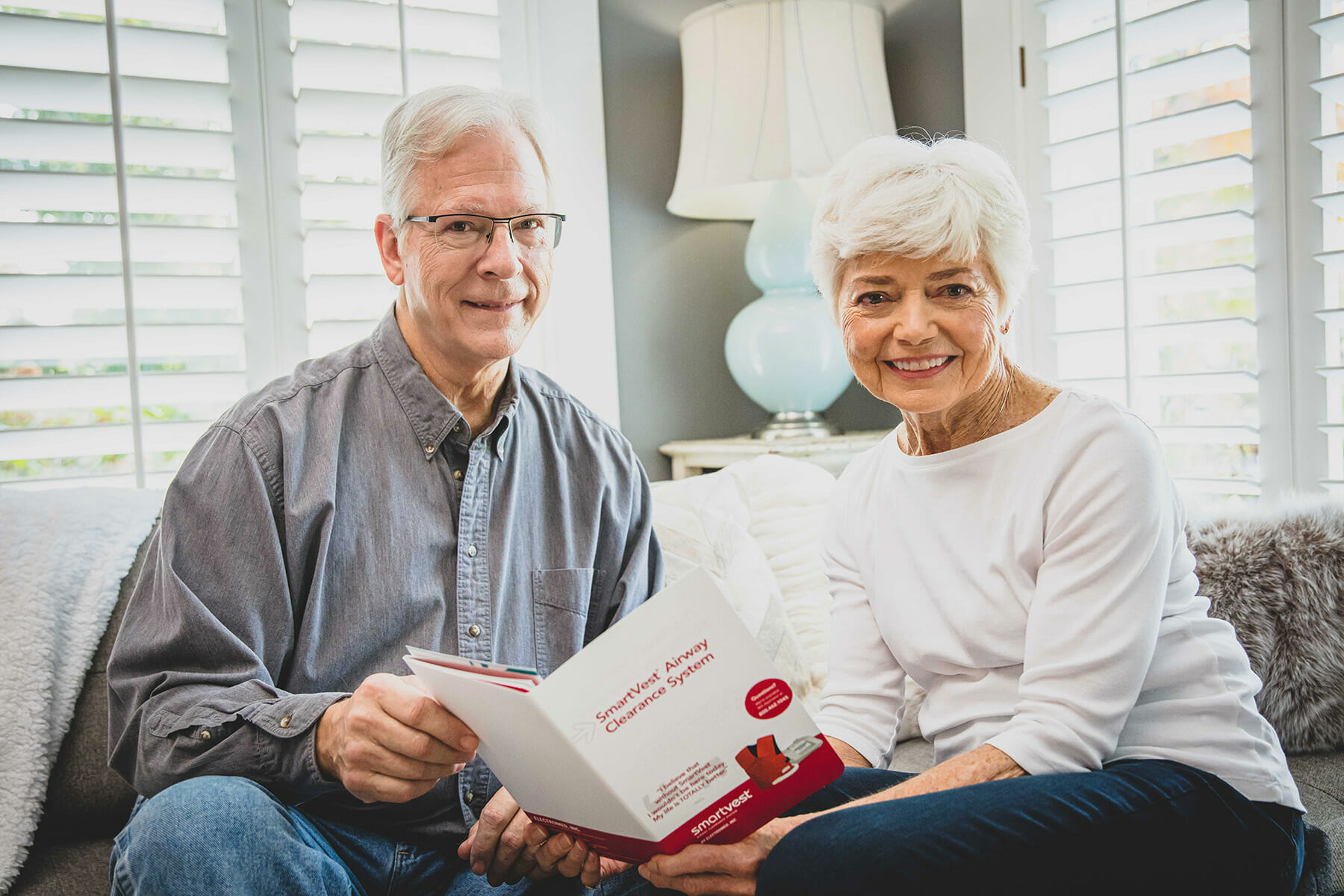 Understanding the signs of a COPD flare up, avoiding its common triggers, and following your prescribed COPD treatment plan can help you lessen the risk of a possible worsening of symptoms. There are also healthy wellness choices you can incorporate into your daily routine and diet to help you live an active lifestyle.
Understanding the signs of a COPD flare up, avoiding its common triggers, and following your prescribed COPD treatment plan can help you lessen the risk of a possible worsening of symptoms. There are also healthy wellness choices you can incorporate into your daily routine and diet to help you live an active lifestyle.
If you’re experiencing a cycle of respiratory infections due to chronic COPD flare ups, it might be time to talk to your doctor about the SmartVest Airway Clearance, the only HFCWO therapy device on the market with published outcome studies demonstrating its effectiveness in reducing hospitalizations and stabilizing lung function.[13]
To learn more about how SmartVest can help you reduce COPD exacerbation, request a free, informational packet today to share with your clinician.
[1] Mayo Clinic. “COPD: Symptoms & Causes.” Retrieved from https://www.mayoclinic.org/diseases-conditions/copd/symptoms-causes/syc-20353679
[2] American Lung Association. “Chronic Bronchitis.” Retrieved from https://www.lung.org/lung-health-diseases/lung-disease-lookup/chronic-bronchitis
[3] Medical News Today. “What Is Emphysema?” Retrieved from https://www.medicalnewstoday.com/articles/8934
[4] Asthma and Allergy Foundation of America. “Asthma Facts and Figures.” Retrieved from https://www.aafa.org/asthma-facts/#:~:text=According%20to%20the%20Centers%20for,in%2013%20people%20have%20asthma.&text=More%20than%2025%20million%20Americans,age%2C%20sex%20and%20racial%20groups.
[5] Mayo Clinic. “COPD: Diagnosis & Treatment.” Retrieved from https://www.mayoclinic.org/diseases-conditions/copd/diagnosis-treatment/drc-20353685
[6] Lung Health Institute. “COPD Flare-Up: What It Is and What You Can Do.” Retrieved from https://lunginstitute.com/blog/copd-flare-up/
[7] Mayo Clinic. “COPD: Symptoms & Causes.” Retrieved from https://www.mayoclinic.org/diseases-conditions/copd/symptoms-causes/syc-20353679
[8] Medical News Today. “How to Manage COPD Triggers.” Retrieved from https://www.medicalnewstoday.com/articles/323239
[9] Mayo Clinic. “COPD: Symptoms & Causes.” Retrieved from https://www.mayoclinic.org/diseases-conditions/copd/symptoms-causes/syc-20353679
[10] Mayo Clinic. “COPD: Diagnosis & Treatment.” Retrieved from https://www.mayoclinic.org/diseases-conditions/copd/diagnosis-treatment/drc-20353685
[11] American Lung Association. “The Basics of Pulmonary Rehabilitation.” Retrieved from https://www.lung.org/lung-health-diseases/lung-procedures-and-tests/pulmonary-rehab
[12] American Lung Association. “Treating COPD.” Retrieved from https://www.lung.org/lung-health-diseases/lung-disease-lookup/copd/treating
[13] Powner, Jordan, et al. Employment of an Algorithm of Care Including Chest Physiotherapy Results in Reduced Hospitalizations and Stability of Lung Function in Bronchiectasis. BMC Pulmonary Medicine, BioMed Central. 25 Apr. 2019.

